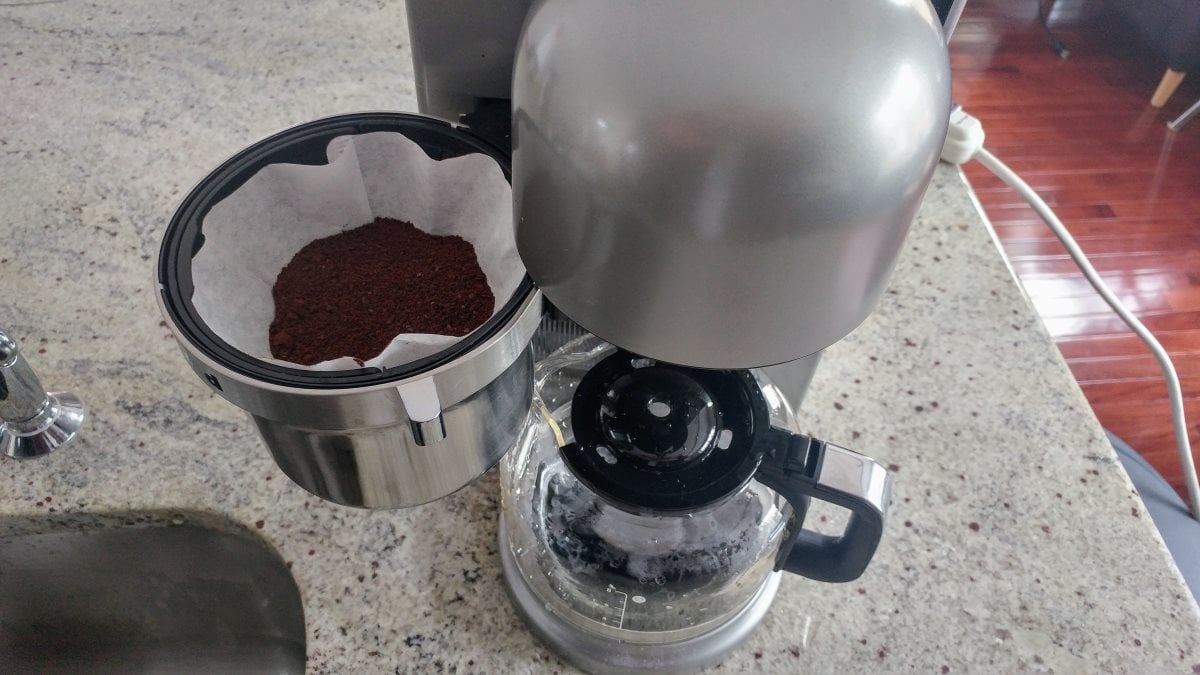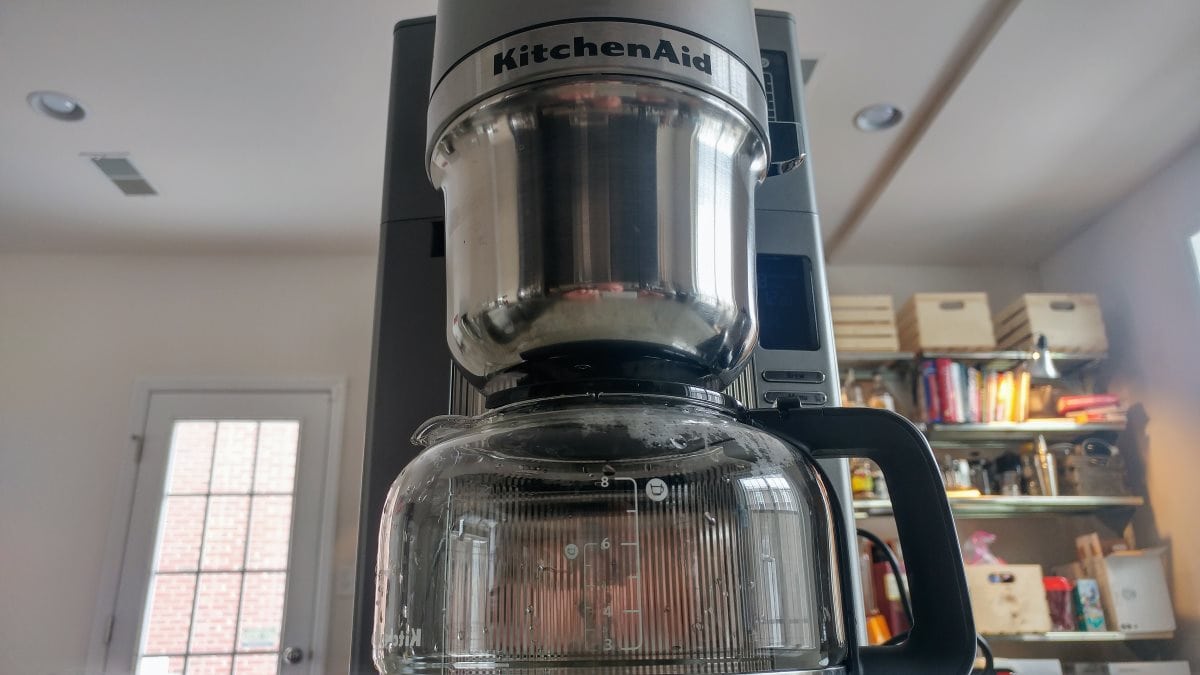This is part of my Everyday Coffee series, in which I review four affordable SCAA-certified coffeemakers. This weekend I started using up is the KitchenAid KCM0802. Read on to find out how it compares!
Meet the KitchenAid KCM0802

KitchenAid, makers of the best stand mixer ever made, has entered the game. Say hello to the KCM0802.
KitchenAid claims that this is not a typical automatic drip coffeemaker; it’s an “automatic pourover”. The idea is that it simulates the pourover process by alternating between sprinkling the grounds with water, and then pausing the flow to allow them to steep. This differs from a typical coffeemaker, which just continually blasts the grounds with water until the reservoir is depleted.
In keeping with the “everyday coffee” mantra, I’ll be taking a subjective look at features like flavor, usability, and design. I love my pourover as much as the next guy, but here in the real world, I just don’t have the time to handcraft two brews every morning. Read on to see if the KitchenAid KCM0802 does a good job at balancing convenience with quality!
open the pod bay doors, hal

Right off the bat, you can tell this coffeemaker is different. For starters, it’s got a retro-futuristic design. This is what you’d get if you asked a 1950s designer to whip up a combination soda fountain / ice cream maker / coffee machine from the far-off year of 2000.
A large bulge in the center holds the heater element and the brew basket, which swings out for easy access. I immediately see two downsides to this: First, how long until that hinge wears out or the basket starts to sag? It feels sturdy enough for now, but will it still be intact in five years? And second, it makes loading the grounds and accessing the control panel a little awkward. Not impossible, just more awkward than it needs to be.

It’s a mild annoyance to be be sure, but we’re not talking about a cheap coffeemaker here. If I’m dropping $180 (note: I found this on sale for $130 at Macys) on a coffeemaker, isn’t that too much to pay for mild annoyances?
At the same time, the KCM0802 makes a few good design choices. There’s a built-in cord wrap in the back to help keep your countertops clutter-free. It uses a standard #4 cone filter, which is easy to find. And all the high-use items — the carafe and the brew basket — are dishwasher-safe.
There’s also a built-in measuring stick in the brew basket to help you add the right quantity of grounds. But if you’re going to do this properly, measuring grounds by volume is a bad idea. Static, temperature, humidity, and time since grinding can all affect volume. You’re far better off measuring by weight. And since it gets in the way of using a permanent filter, the coffeemaker would be better off without it in the first place.
Brewing the Right Way
The SCAA recommends a coffee-to-water ratio of about 1:17. This means that for every 17 grams of water, you’ll use one gram of coffee. Using this ratio means that if you add a liter of water, you’ll want to use 59 grams of coffee. You should adjust this ratio to your personal taste, and most people fall in the 1:15 – 1:18 range.

Just remember that “one cup” in a coffeemaker carafe isn’t the same as one measuring cup of water. Manufacturers all have their own version of “12 cups” or “8 cups”, so you’ll want to actually measure your water separately. In the KCM0802, I’ve found that one liter of water produces about 7 cups of coffee as marked on the carafe.
Unlike most coffeemakers, the KitchenAid KCM0802 doesn’t just automatically brew all the water in the reservoir. Instead, you can set you brew size by the cup. Thus, if the reservoir is full and you select a 6-cup brew, the KCM0802 will stop at 6 cups and you’ll have water left in the reservoir.
Presoaks and pourovers

The KCM0802 uses a simple gear mechanism to alternate between sprinkling (or “jimmying” if you’re from Philadelphia) the grounds for a few seconds, then letting them steep for a few more seconds. A nice side effect of this method is that your brew begins with a presoak. The wide showerhead nozzles do a very good job at providing even water distribution over the entire brew basket. In short, until your build your very own robot barista, this is as close to an automatic pourover as you’re going to get.
During the brew process, the VFD panel uses icons and text to tell you what it’s doing. The display itself is a little small, but it works. I’d love for every coffeemaker to have the big, beautiful display of the Cuisinart CPO-800, but unfortunately that’s just not the case. Is it a dealbreaker? No, of course not — but again, when we’re talking about a relatively expensive coffeemaker like this, it’s a little more difficult to forgive poor design choices.
But how does it taste?
I started using the KitchenAid KCM0802 this weekend, and the initial results are very promising! It’s certainly a big improvement over the CPO-800. I’ll be spending the next week putting it through its paces as my daily driver. That’s two travel mugs of coffee for our morning commutes, a fresh pot in the afternoon, and a few extra rounds on the weekend. Look for my next post to see how it holds up!

